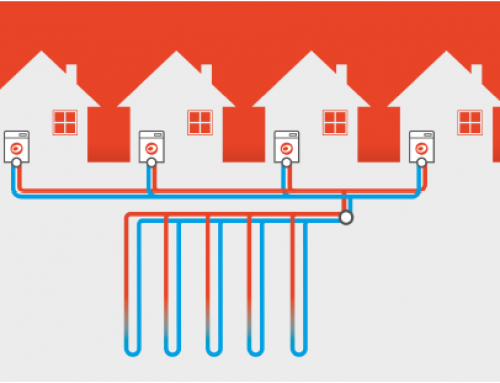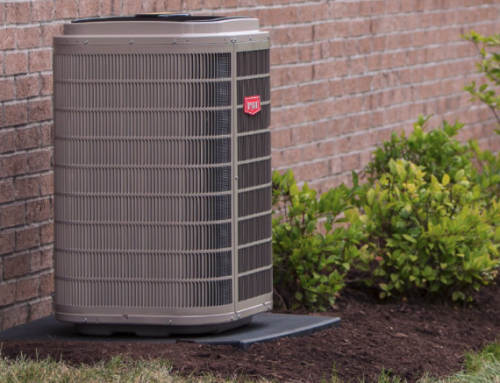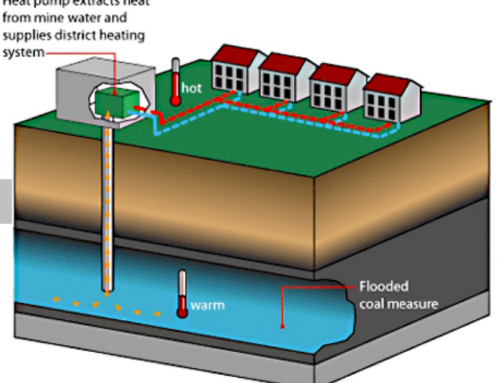By Julian Singer
Heat pumps are expected to play a major role in decarbonising residential heating, which contributes 14 per cent of the UK’s CO2 emissions, about the same as transport. In fact they are nearly the only solution currently available and will remain so unless the gas grid is converted to hydrogen. But what is the real cost involved in conversion?
A heat pump collects a large amount of heat at low temperature from outside the house and converts it into a smaller amount of heat at high temperature using a system of compression and evaporation as in a refrigerator but in reverse. An Air Sourced Heap Pump (ASHP) collects heat from the air, while a Ground Source Heat Pump (GSHP) collects it from the ground. The GSHP is more efficient but requires a large area of horizontal pipes underground, or several vertical holes. Most residential pumps in the UK are expected to be ASHPs
The performance of the heat pump is summarised in its Coefficient of Performance (COP), which is the ratio of the heat energy generated divided by the electrical energy consumed. COP varies between about 3 and 5, showing the great attraction of heat pumps in that most of the energy comes for free from the air or the ground. COP decreases as the difference between the temperature desired and the temperature available from the air or ground increases. While the temperature required is fairly constant, the external temperature varies with the season. For this reason the average of COP over the year, called the Seasonal Performance Factor (SPF), is often used.

www.renewableenergyhub.co.uk
There are important trade offs. Current gas boilers produce water at 55C/60C and radiators are sized accordingly. ASHPs can produce water at this high temperature but with low efficiency. For this reason most homes will need larger radiators running at a lower temperature. Unlike a combination gas boiler the ASHP cannot produce hot water fast enough for showers and baths so needs a water tank.
A study by UCL and Element Energy on behalf of the Committee on Climate Change looked into these and other issues last year[1]. In particular the study calculated the capital cost of replacing a gas boiler with an AHSP for an average home with an annual space heating demand of 11,000 kWh. The pump itself costs £7000 but to this must be added radiator upgrades (£2000), hot water cylinder (£1000), and the cost of decommissioning the boiler and changing the cooking appliances for a total of £10800. For comparison a comparable new combination gas boiler would cost below £3000.
Annual running costs are also high. Adding 3000 kWh for hot water the total cost using a combination gas boiler at current retail gas prices is near £500 (including VAT). For the ASHP with radiator upgrades the SPF would be near 2.7 for the space heating and 2.3 for the hot water, therefore requiring 5300 kWh of electricity at a cost of £900, nearly double that of gas.
Who should pay? The Renewable Heat Incentive plan currently pays 10.85p per kWh towards electricity for an ASHP. This reduces the annual running cost to £325, less than for gas but not enough to write off the capital cost in any reasonable time frame. It is expected that as we move to large scale manufacturing capital costs will go down and SPFs will improve, hence reducing running costs. However it is likely that home owners will need more incentive to make such a major change inside their property.
One option is a Hybrid Heat Pump. This allows the heat pump to provide the majority of the heat but uses a gas or purely electric boiler to provide the additional high temperature water. Since the heat pump is running at its optimum efficiency, its running costs are less even if the capital cost is higher. If gas is used for the extra power the total running costs are much less but unless biogas or hydrogen is used the system is not decarbonised, hence only a provisional solution.
Finally, there are large non-domestic costs related to delivering the extra electricity required for heat pumps. At present UK electricity demand runs at nearly 1 TWh per day and is roughly the same in all seasons. Gas demand, on the other hand, peaks near 4 TWh per day in the middle of winter. If heat pumps replaced all this demand they would be at their lowest efficiency with a COP of 2, thus requiring 2 TWh of electricity. The electricity grid would therefore have to supply three times the amount of power currently supplied mid-winter. This will require massive upgrades to the grid quite apart from the need for extra renewable energy sources and storage.
Decarbonising residential heating lies late in the government’s plans to reach net zero by 2050, but consideration of the costs involved needs to be made soon. If the heat pump solution is considered too high then work must start immediately to evaluate the only alternative, which is to change the gas network to hydrogen.
[1]“Analysis on abating direct emissions from ‘hard-to-decarbonise’ homes with a view to informing the UK’s long term targets” by Element Energy and UCL, July 2019





